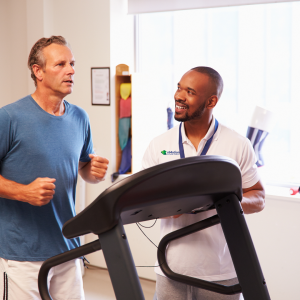Running is a popular pastime for many in the United States and around the world. It helps keep one fit, feel his or her best, or in some cases, it just helps blow off steam from a stressful day. It is also one of the less expensive forms of exercise you can take part in. Really all you need is a good pair of running shoes and a long stretch of trail or road. And, while running may look easy, I mean, it’s just walking but faster, right? There are considerations that should be taken into account to help make you a better, more effective, runner that is less likely to take on an injury. Whether you are a beginner or someone who has been running for a long time, to be a successful at running, preparation is key!
First and foremost, when preparing to run, don’t assume you can start your running regiment with signing up for a marathon. While a lofty goal, you need to start out slowly and let your body ease into a routine. It will need to adapt to this new way of being physically active. In the beginning consider mixing running with other forms of exercise. Once you have established a base fitness level you can gradually start to pick up days of the week you run, along with speed and distance. Be sure to listen to your body. It will let you know when you are pushing too hard or if there is an adjustment that needs to be made. Don’t ignore pain and try to push through it. It is with this attitude that injuries become worse than they need to be – requiring more than rest, sometimes even medical attention. One of the best ways in preparing for running is preventing a running injury is stretching. Make sure your muscles are ready and warmed up for the activity they are about to perform. You can do this a number of ways, including isometric stretching or just warming up with a brisk walk. The idea is to activate your muscles in a gradual way and not thrust them into activity while they are tight and not ready.
Your form is key when running. With proper form and mechanics you will be a better and more effective runner. So, start from your head and be cognizant of how it is being held. Your gaze should be directly in front of you, not up or down. By having your head in the correct position it helps keep the neck in alignment, which helps with the shoulders and so forth. You see where I’m going with this? Really, there isn’t a body part that isn’t involved when running. Even the way you hold your hands (tight vs. relaxed) can play a part into your running form and output. Other body parts that you should keep in mind are your core, hips, knees, legs and feet. Wow! That really does cover the entire span of the body. Physical therapists are able to assess your form and identify weaknesses that may be an injury waiting to happen. Through gait analysis and other tests your physical therapist can help you become a stronger, more efficient, runner. Also, by complementing your routine with strength training, you can improve your running form by building and strengthening muscle.
One last thing that all runners should take into consideration – your footwear. Not all shoes are made equal and for that matter, not all athletic shoes are meant for running. As a new or experienced runner, you will want to see an experienced footwear specialist that knows the ins and outs of running shoes. The specialist will know how to fit you properly, as well as consider other foot issues, such as over or under pronating, arches, foot width and so much more. Having footwear that works with your foot type and is meant for running will go a long way.
Running can be a great way to stay in shape. It can also help clear your head and be more focused with your daily grind. But, without putting some thought into it, running can also lead to injury and pain. If you are a beginner runner or would like to take up running, consider seeing your physical therapist to assess for any weaknesses. If you are experiencing pain or discomfort from your running routine, see your physical therapist to identify the problem and help you obtain a faster recovery.
Learn more about nMotion’s gait training assessment.

